Home | Women in Sport | Women in Canadian Sport 1867-Present
Overview of Early History 1867-1960's
PreviousNext
It was exceptionally rare for Canadian women to compete in sport before the late nineteenth century. Early female athletes struggled against discriminatory assumptions that women inherently lacked the physical speed and strength required to participate in sport, and flawed medical theories actively popularized the belief that strenuous physical activity actually threatened women's reproductive abilities. While it was socially acceptable for women to pursue relatively passive activities like tobogganing, croquet, horseback riding, snowshoeing and skating, competitive sport in nineteenth century Canada remained a privileged pastime almost exclusively enjoyed by men.
Canadian women began to break through gender barriers in the 1880's with the introduction of the 'safety' bicycle, which featured two matched tires. Throughout the 1890's social clubs formed across Canada to promote cycling for both men and women. Creating opportunities for better physical exercise, personal mobility and social freedom, the cycling craze also changed the way women appeared and behaved in public spaces. Female cyclists replaced long heavy skirts and corseted waists with more practical garb that allowed them to move more freely, including shorter dresses, split skirts and bloomers. By the end of the nineteenth century cycling had opened new doors for independent 'new women' to participate in more competitive and physically demanding sports, including rowing, tennis, golf, curling, and hockey.
Lady Isobel Stanley, daughter of Canada's sixth Governor General, was a trailblazing early pioneer in women's hockey. The earliest known photograph of women's hockey in Canada captured Isobel playing shinny in a long white dress beside Government House in Ottawa circa 1890. With two of her brothers, Isobel also encouraged Lord Stanley to donate the silver trophy that later became the National Hockey League's iconic championship prize. The image of upper-class women playing a gregarious game of pond hockey challenged established notions of respectable feminine behaviour in the late nineteenth century. In their wake, women's hockey teams quickly multiplied across Canada. Adopting colourful team names like the 'Saskatchewan Prairie Lilies' or the 'Old Hens', their grassroots enthusiasm helped empower Canadian women to get off the sidelines and take up sport in unprecedented numbers at the dawn of the twentieth century.

Alexandrine Gibb was an advocate for women's sport in many ways, as an athlete, sports administrator and journalist. She lobbied to ensure that women would have the same opportunities and access to facilities as men and she encouraged women to run their own sport organizations. In 1928 she was named as manager of the Women's Olympic Team.
Collection: Canada's Sports Hall of Fame
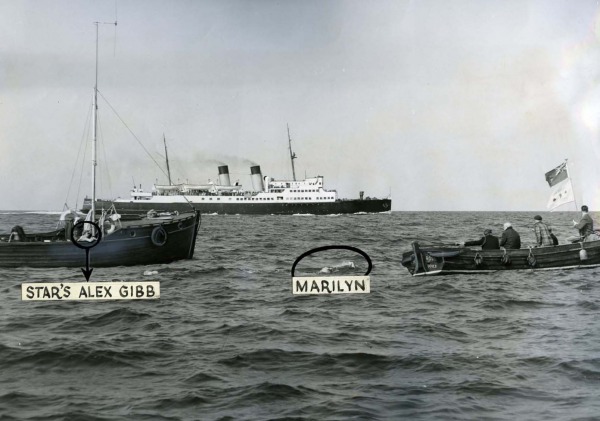
Alexandrine Gibb wrote a column for the Toronto Daily Star called "No Man's Land of Sport". She used it as a platform to promote sport. In 1954 when Marilyn Bell proposed to swim across Lake Ontario she was one of her top promoters and served as an inspiration to the young marathon swimmer.
Collection: Canada's Sports Hall of Fame

Cécile Grenier helped establish the modern concept of female physical education. Throughout her career from 1927 to 1971, she championed children's and women's physical education by providing both theoretical training courses and practical sport and educational opportunities.
Collection: Archives UQAM

Starting in 1927 Cécile Grenier worked for the Montreal Catholic School Commission teaching gymnastics to primary and secondary students. By the 1940's she perfected her studies in her approach to female physical education and as well as building fitness programs, she trained the physical education teachers.
Collection: Archives UQAM
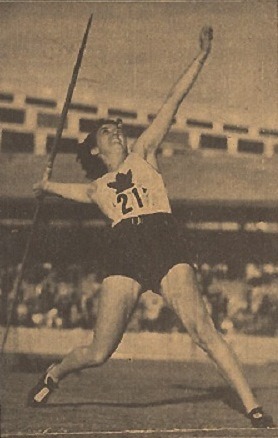
Robina Higgins Haight was discovered by a track and field coach as he watched her performance in the novelty events of time base running and ball throwing event at a baseball game. She soon excelled in the field events of javelin, shot put, ball throwing and discus. She alternated her summer sports with basketball in the winter, proving herself a strong and passionate competitor at whatever she did.
Collection: Canada's Sports Hall of Fame
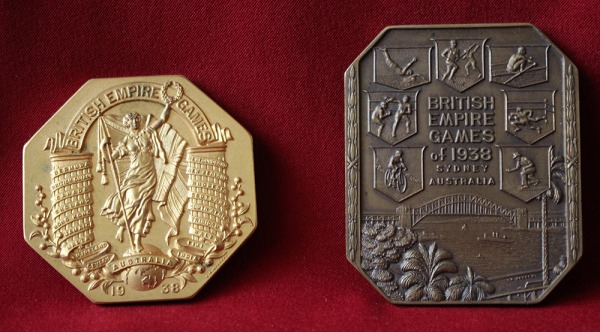
Shown here are Robina Higgins Haight's gold medal for javelin and her participation medal from the 1938 British Empire Games. After she retired from active competition she continued to excel in golf and curling. Her discipline and competitive edge made her one of Canada's top athletes in the 1930's.
Collection: Canada's Sports Hall of Fame
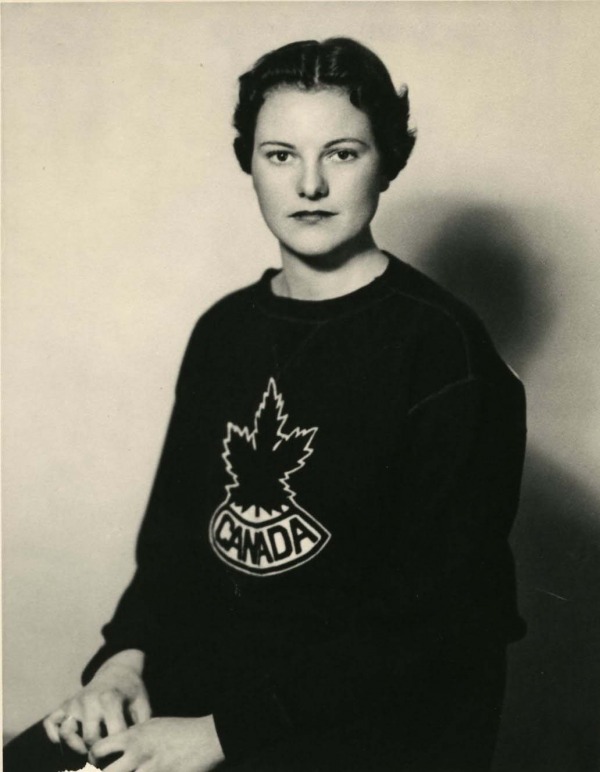
Phyllis Dewar was Canada's first outstanding female swimmer in international competition. She started swimming at age four and was spurred on by a natural ability and a competitive nature. She became a top swimmer by the age of seventeen and won every Canadian title, setting many new records, proving her excellence and passion for the sport.
Collection: Canada's Sports Hall of Fame
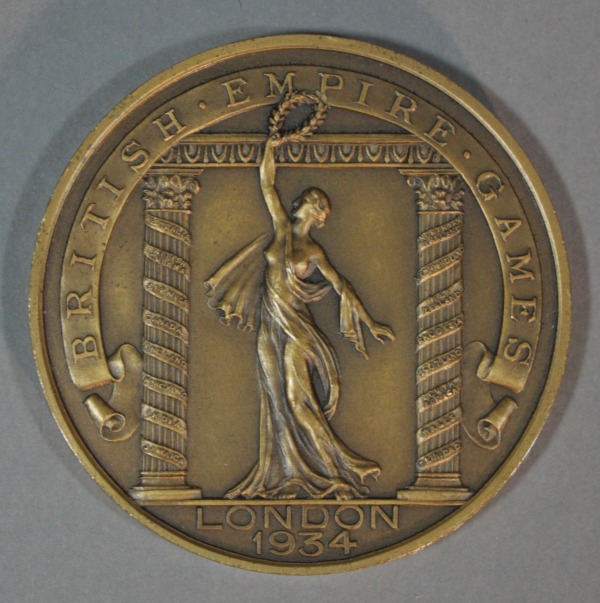
Phyllis Dewar established herself as the top female swimmer at the 1934 British Empire Games in London, England when she won four gold medals similar to this one. She was dubbed "The Moose Jaw Mermaid and the Mermaid of the Plains" by the press. She went to compete at the 1936 Olympic Games and won another gold medal at the 1938 British Empire Games in Sydney, Australia.
Collection: M.M. Robinson, on loan from William F. Clark, Executor

Aileen Meagher started her athletic career in 1931 as a member of the Dalhousie track team. She was racing when women's athletics was still controversial but with her determination and courage she quickly established herself as the Canadian record holder in the sprint events. Although injury prevented her from competing at the 1932 Olympic Games she persevered and won a bronze medal with the relay team at the 1936 Olympic Games.
Collection: Canada's Sports Hall of Fame
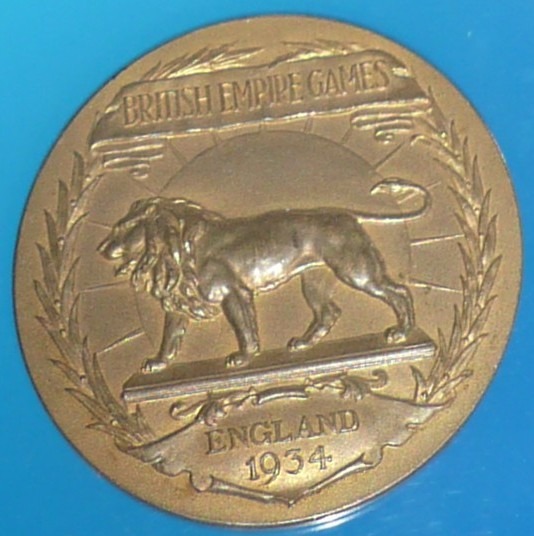
Aileen Meagher's discipline and excellence showed at the 1934 British Empire Games in London, England where she won three medals including the one shown here and at the 1938 Games in Sydney with a further two medals. As a teacher, she was known as "the Flying Schoolmarm" and she brought the same passion to the schoolroom that she did to her competitions.
Collection: Canada's Sports Hall of Fame
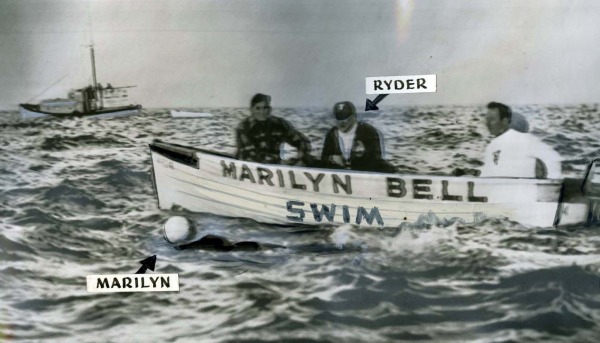
The challenge was on in 1954 as three swimmers attempted to become the first person to swim across Lake Ontario. In an epic swim that lasted 20 hours and 58 minutes, 16-year old Marilyn Bell walked ashore in Toronto. Her feat of endurance won her immediate respect and acclaim and she was known after that as the First Lady of the Lake.
Collection: Canada's Sports Hall of Fame
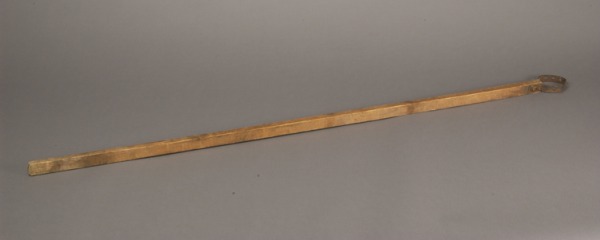
In a marathon swimming event, the swimmer is not allowed to "land" anywhere and that includes touching the boat. Marilyn was fed pablum on her epic swim across Lake Ontario using a feeding stick that held the cup out to her. She battled cold water, lamprey eels and exhaustion but her perseverance and determination brought her safely to shore.
Collection: Canada's Sports Hall of Fame
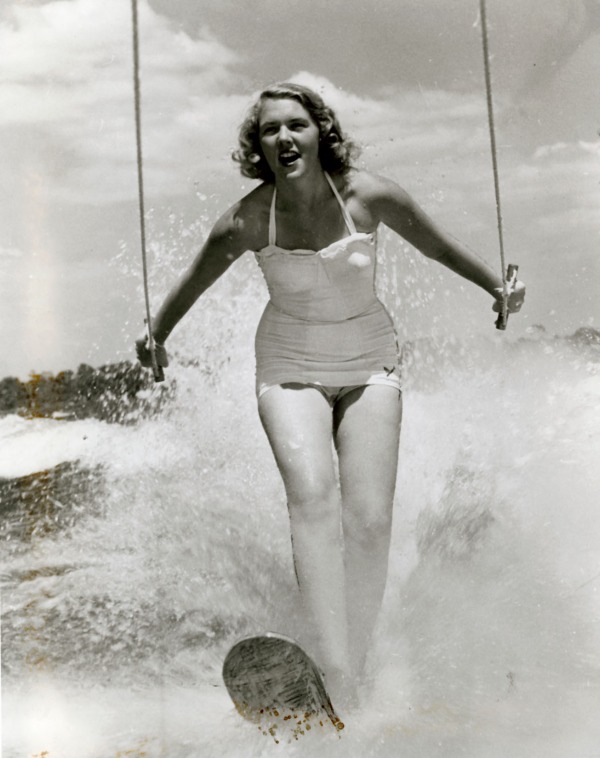
Carol Ann Duthie was a pioneer in women's sport through the 1950's to the 1970's, breaking down many barriers. She played several sports but water skiing was where she excelled. She won both Canadian and international competitions. She continued to give back to her community by becoming a coach and inspiring young women to get involved in water skiing.
Collection: Canada's Sports Hall of Fame

Water skiing as a competitive sport was in its infancy when Carol Ann Duthie started to compete at age thirteen. Combining a natural talent with courage and a competitive nature, she was jumping 50 feet and tricking 400 points which were top marks for the era.
Collection: Canada's Sports Hall of Fame

Tennis was considered an acceptable sport for women in the 1890's. The game was developed in England in the mid-19th century and was played on lawns. The first tennis club in Canada was established in Toronto in 1875 and the sport spread rapidly throughout Canada. These mixed doubles teams are seen playing the game in 1893.
Collection: Library and Archives Canada
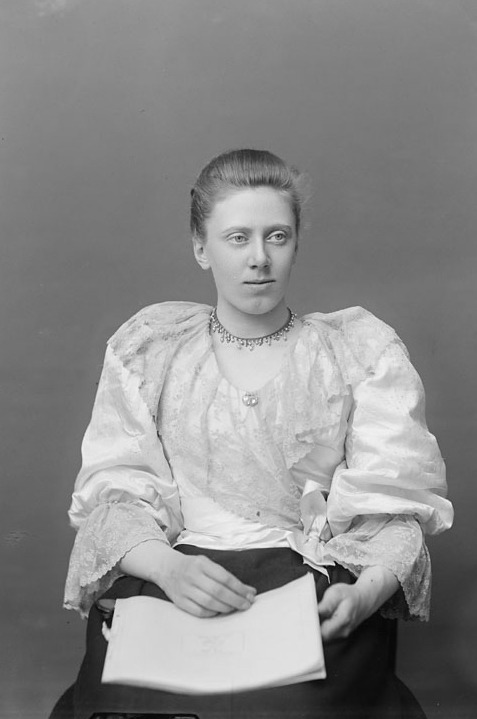
The first women's recognized hockey game was played at the Rideau Skating Club in Ottawa in 1889. Eight women took part, including Lady Isobel Stanley who played for the Government House team.
Collection: Library and Archives Canada
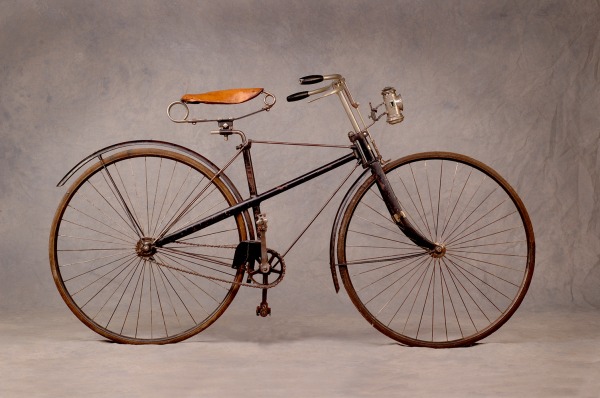
This 1890 Hartford cross-frame safety bicycle allowed women to take up the past-time of cycling. Cycling had a liberating effect on women, allowing them to travel unchaperoned, to socialize at parks and other meeting places with other cyclists. This opportunity effected a change in sportswear when women adopted "rational dress" such as bloomers, rather than ankle-length skirts.
Collection: Reynolds Alberta Museum

During the 1890's women's hockey teams were being established and the first women's club was founded at Queen's University in 1895. By the First World War there were community leagues and teams playing in regions across Canada. International play between Canadian and American teams was taking place by 1917.
Collection: Library and Archives Canada
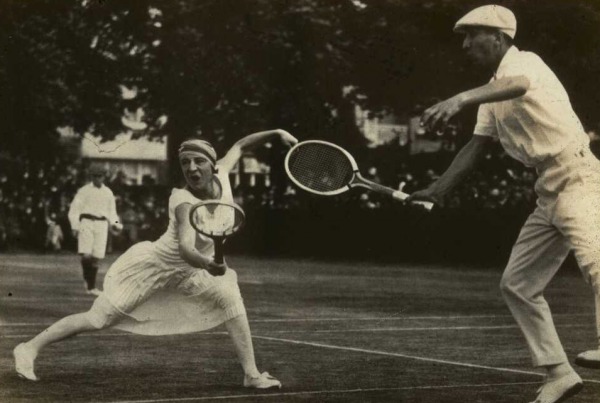
The first Olympic medal won by a woman was by Charlotte Cooper of Great Britain in tennis at the 1900 Olympic Games in Paris. By the late 1920's women were playing tennis at elite levels. The tennis skirt was introduced in 1929 and allowed women the freedom to play the game without the encumbrance of long skirts.
Collection: Canada's Sports Hall of Fame
Previous Next


